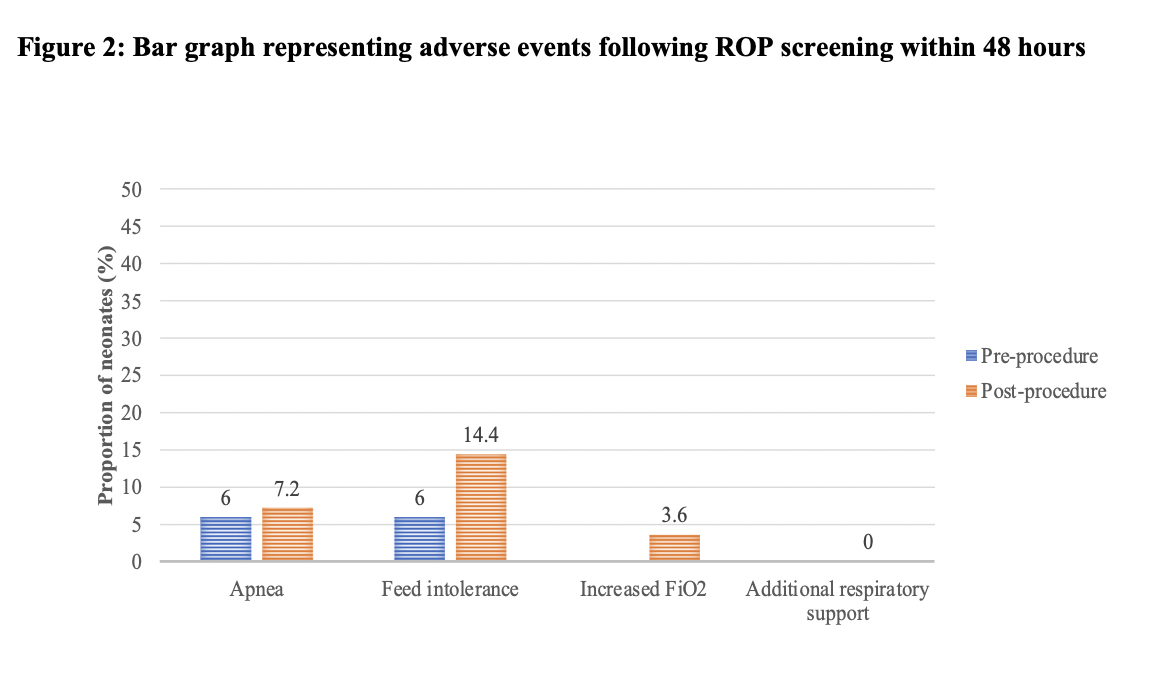Neonatal General
Neonatal General 8: NICU Practices 2
184 - Post-procedure pain in preterm neonates undergoing retinopathy of prematurity (ROP) screening: A prospective cohort study
Publication Number: 184.332

Raman Singla, Doctor of Medicine (Paediatrics) (he/him/his)
Senior Resident
All India Institute of Medical Sciences, New Delhi
New Delhi, Delhi, India
Presenting Author(s)
Background: Retinopathy of prematurity (ROP) screening in a premature infant is a painful procedure. There is a lack of assessment of the magnitude of post-procedural pain within 48 hours in the literature.
Objective:
To evaluate the magnitude of post-procedural pain among preterm neonates undergoing ROP screening within 48 hours.
Design/Methods:
This descriptive study was conducted on inborn preterm neonates undergoing their first ROP screening in a level III NICU in India.
The primary outcome was to assess the magnitude of pain within 48 hours after screening by using the revised premature infant pain profile (PIPP-R) score. The score was measured at 5 minutes before the procedure (baseline), 5 min (immediately) post-procedure, 30 minutes, 6, 24 and 48 hours. Non-pharmacological (nesting, swaddling, 25% oral dextrose solution) and pharmacological (0.5% topical proparacaine) measures were used to reduce pain during the screening. Secondary outcomes were to measure the incidence of apneas, increased baseline oxygen requirement (FiO2) ≥ 5%, additional respiratory support requirement, and feed intolerance following the screening.
Results: Among 83 neonates, the mean gestational age and birth weight were 29.8 (2.3) weeks and 1256 (344) g respectively. The mean postmenstrual age at the time of examination was 33.7 (2.5) weeks. The median (IQR) PIPP-R score at baseline was 0 which significantly increased to 10.5 (8, 12.5; p-value < 0.0001) 5 min (immediately) after the procedure. It remained high at 30 min and 6 hours with scores of 7 (5, 8; p-value: < 0.0001) and 4.5 (3, 5.5; p-value: < 0.0001). Subsequently, at 24 and 48 hours, it decreased to 3 (0, 5; p-value: < 0.0001) and 0 (0,4.5; p-value: < 0.0001) respectively (Figure 1).
Nearly 59% (95% CI: 40%–83%) of neonates had severe pain, while 24% (95% CI: 13% - 37%) had mild-moderate pain immediately post-procedure. After 30 minutes, one neonate had severe pain and 52% (95% CI: 35 – 75) had mild-moderate pain. At 6, 24 and 48 hours, 11%, 4% and 1% had mild-moderate pain respectively.
Apnea occurred in 7% (n=6) of neonates with an incidence rate of 17 episodes per 100 infant-days. There was no significant increase from baseline in other secondary outcomes (Figure 2).
Conclusion(s): The majority of the neonates experience severe pain immediately after ROP screening and mild-moderate pain continued for 6 hours despite the use of non-pharmacological and pharmacological pain-relieving measures. Therefore, an additional pharmacological agent should be considered for reducing neonatal pain during and after the procedure.

.png)
